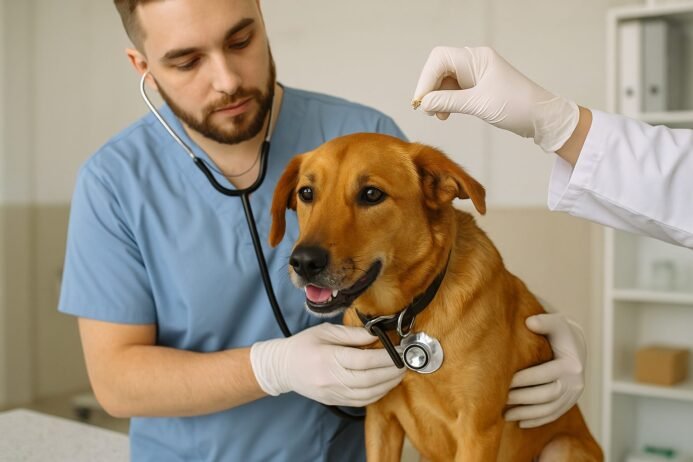Ehrlichiosis in Dogs
- 22 September 2025
- BuyAPet Editorial Team
- All Dogs, Cats and Dogs, Dog Health
Ehrlichiosis in Dogs
Ehrlichiosis is a serious tick-borne disease that can affect dogs across the UK and Europe. Early detection and treatment are key to keeping your dog healthy.

What is Ehrlichiosis?
Ehrlichiosis is a disease caused by a type of bacteria called Ehrlichia, spread through tick bites. Once a dog is bitten by an infected tick, the bacteria can enter the bloodstream and cause a range of health issues.
It is more common in warmer parts of Europe, but with increased travel and climate change, cases are now appearing in the UK.
Signs and Symptoms
Symptoms can appear days to weeks after a tick bite and may vary depending on the stage of the disease.
| Stage | Symptoms |
|---|---|
| Acute (early) | Fever, lethargy, swollen lymph nodes, loss of appetite |
| Subclinical | No obvious symptoms but infection still present |
| Chronic (advanced) | Weight loss, bleeding problems, lameness, neurological issues |
Prevention is Key
- Use vet-approved tick prevention treatments year-round.
- Check your dog daily for ticks, especially after walks.
- Avoid walking in areas with long grass during peak tick season.
- Remove ticks promptly and safely with a tick removal tool.
Treatment for Ehrlichiosis
If your dog is diagnosed with ehrlichiosis, your vet may prescribe a course of antibiotics, such as doxycycline. Supportive care, like fluids or medication for secondary symptoms, may also be needed.
Early treatment offers the best chance for a full recovery.
FAQs
Can ehrlichiosis spread to humans?
Ehrlichiosis primarily affects dogs, but certain species of Ehrlichia can infect humans. Good tick control helps protect both pets and people.
How long after a tick bite will symptoms appear?
Symptoms can show up within 1–3 weeks, but some dogs may carry the bacteria without signs for months.
Is ehrlichiosis common in the UK?
It is still relatively rare in the UK, but cases are increasing due to travel and changing tick populations.
What should I do if I find a tick on my dog?
Remove it safely using a tick tool, avoid squeezing the body, and monitor your dog for any changes. Contact your vet if concerned.
